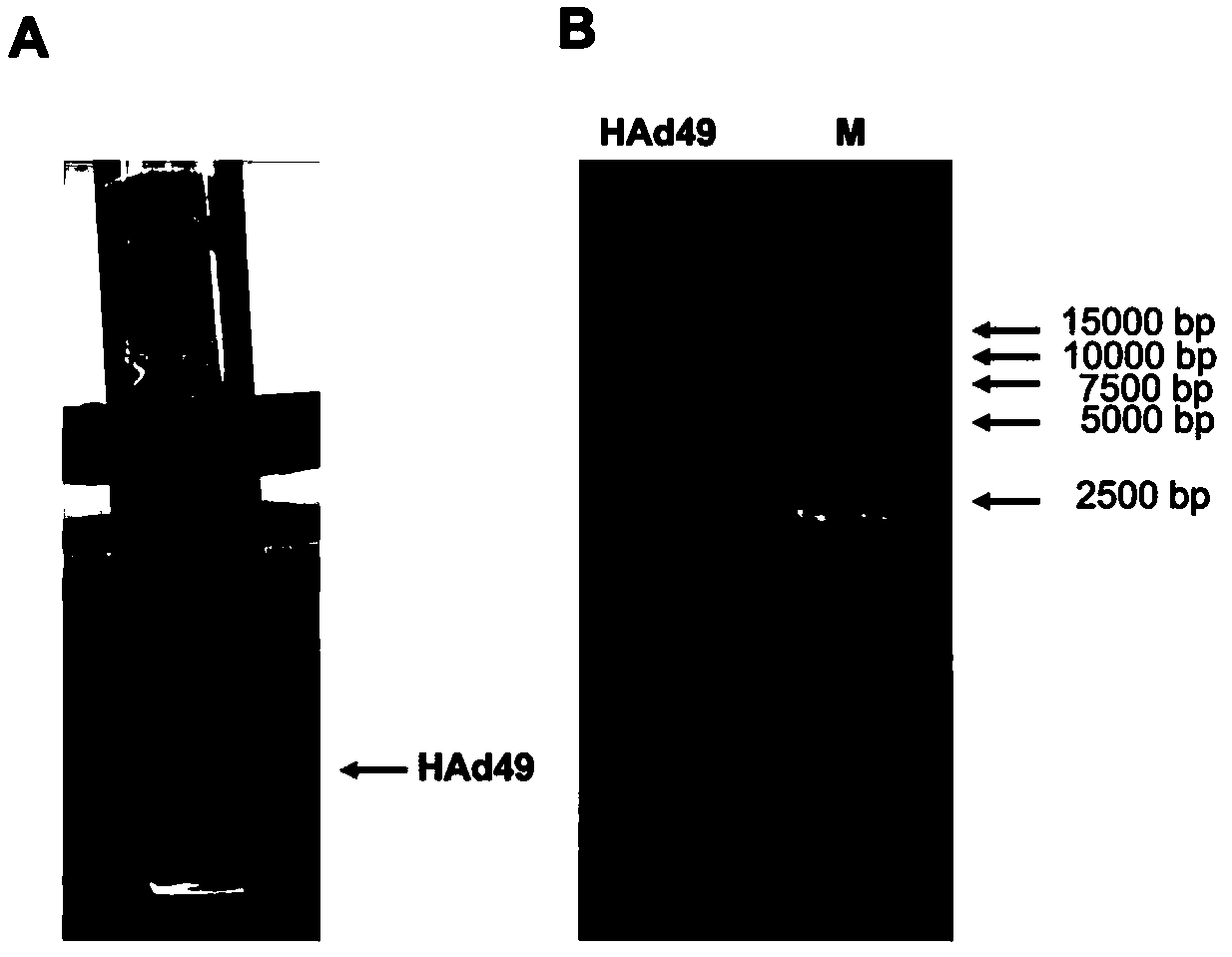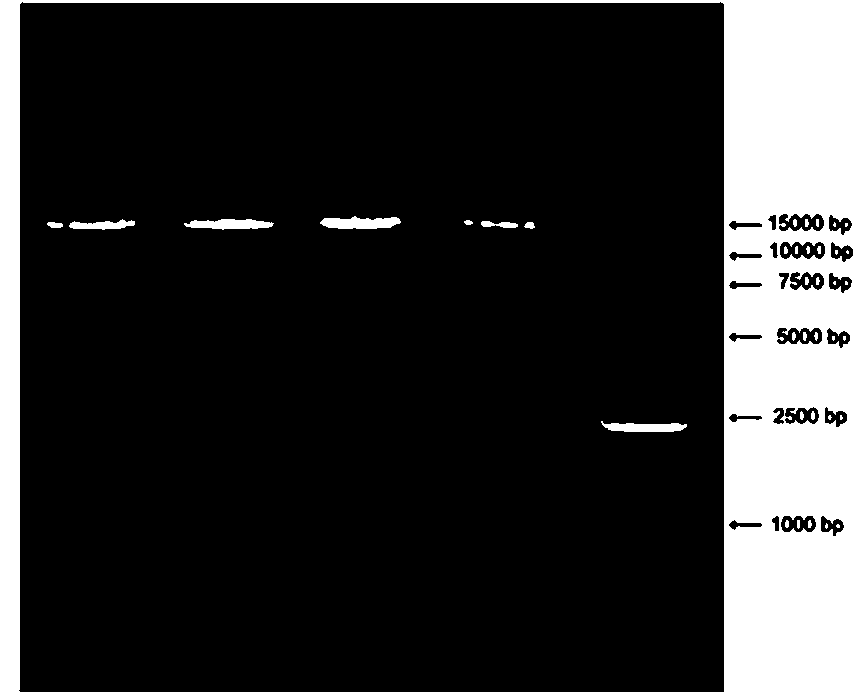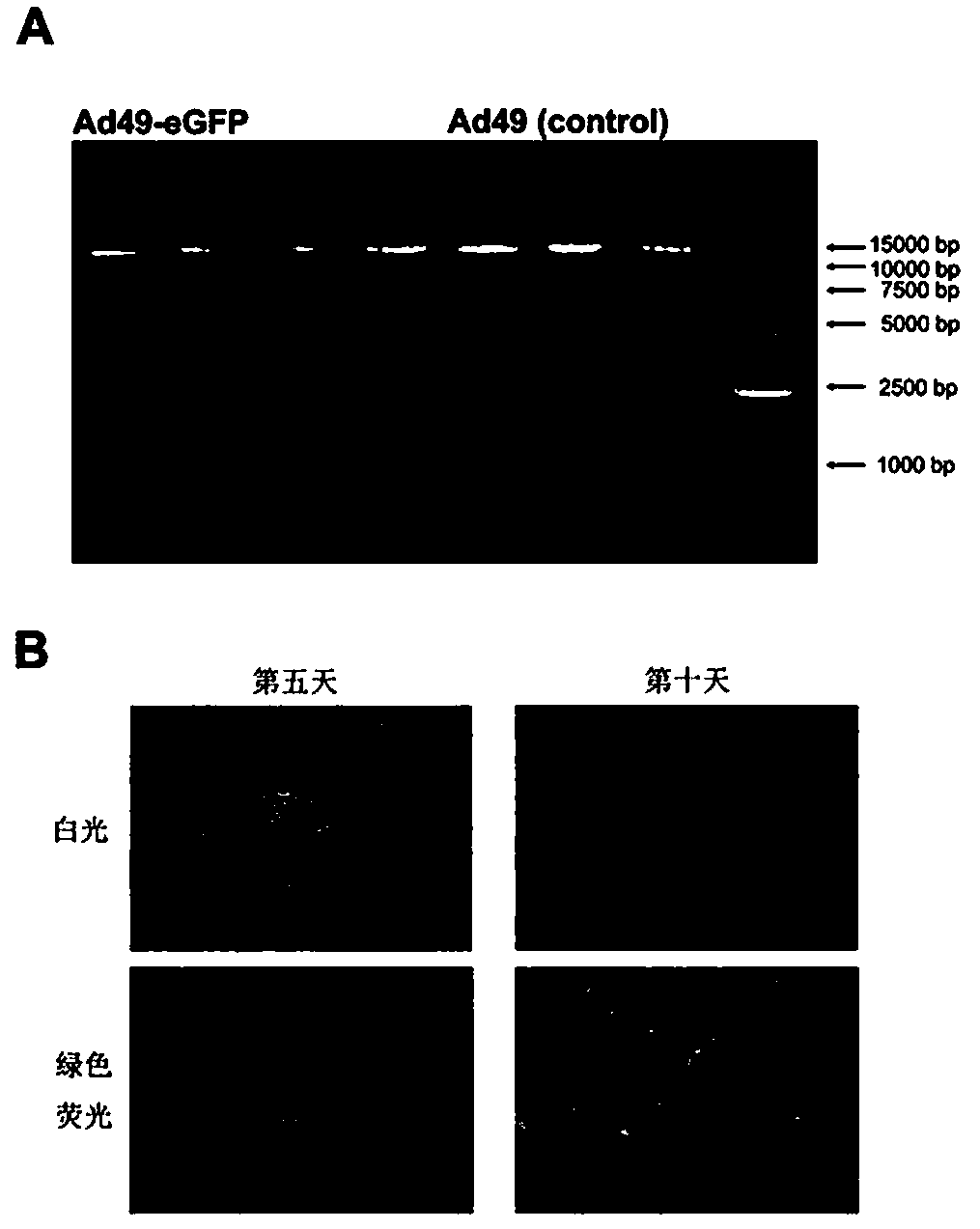Recombinant adenovirus expression vector based on adenovirus HAd49 and construction method thereof
A technology of recombinant adenovirus and expression vector, applied in the direction of virus/phage, virus, virus peptide, etc., can solve the problem of recombinant virus titer or purity can not reach clinical use, and achieve the effect of improving the success rate
- Summary
- Abstract
- Description
- Claims
- Application Information
AI Technical Summary
Problems solved by technology
Method used
Image
Examples
Embodiment 1
[0087] Example 1. Amplification and purification of adenovirus and extraction of adenovirus genome
[0088] The rare human serotype adenovirus HAd49 proliferates in HEK293 cells, and the purified virus is obtained by cesium chloride density gradient centrifugation, and then the viral genomic DNA is extracted, identified by double enzyme digestion with SrfI and KpnI, and subjected to agarose electrophoresis. For the experimental results, please refer to figure 1 , where Figure A is the result of cesium chloride purified virus, the white band clearly visible in the lower layer is the wild-type virus HAd49 with infectious activity, and Figure B is the result of SrfI and KpnI double enzyme digestion identification of HAd49 virus extracted, The strips are the right size.
Embodiment 2
[0089] Example 2 Construction of a replication-deficient adenoviral vector
[0090] according to Figure 5 Flowchart shown, PCR amplification of the LITR fragment (1-462) of the genome of HAd49. Using the pUC57-linker plasmid as a template, the Linker fragment was amplified by PCR. Using the DNA fragments of LITR and Linker as templates, the sequence LITR-Linker was obtained by OverlappingPCR amplification, and the target gene was connected to the vector pNEB193 using restriction sites PmeI and SpeI to obtain the plasmid pNEB193-LITR+linker;
[0091] PCR amplified HAd49 genome position 30736 to 32257 fragment is 3; PCR amplification Ad5 genome fragment E4orf6 is 4; PCR amplification HAd49 genome position 33389 to 35215 fragment is 5; with DNA fragments 3,4 and 5 is a template, OverlappingPCR amplifies to obtain fragment 345, inserts the target gene into the plasmid pNEB193-LITR+linker with the restriction sites of SwaI and PacI, and obtains the plasmid pNEB193-LITR+linker+34...
Embodiment 3
[0094] Example 3, construction of recombinant adenovirus Ad49-eGFP
[0095] The green fluorescent protein gene (eGFP) was cloned into the Ad49 vector, and the recombinant adenoviral vector Ad49-eGFP was identified by HindIII digestion, and the Ad49 empty vector digested by restriction enzyme was used as a control. Please refer to image 3 A, the size of the band is correct, and the exogenous gene eGFP is correctly connected after sequencing analysis.
[0096] After the recombinant vector Ad49-eGFP was identified by enzyme digestion and sequencing, it was transfected into HEK293 cells after linearization with AsiSI enzyme digestion, and the virus was packaged. Cytopathies appeared on the fifth day of transfection, and then the plaques of the virus gradually expanded, as shown in image 3 As shown in B, the formation of clear viral plaques can be seen, and a large amount of expression of green fluorescent protein can be observed under a fluorescent microscope.
PUM
 Login to View More
Login to View More Abstract
Description
Claims
Application Information
 Login to View More
Login to View More - R&D
- Intellectual Property
- Life Sciences
- Materials
- Tech Scout
- Unparalleled Data Quality
- Higher Quality Content
- 60% Fewer Hallucinations
Browse by: Latest US Patents, China's latest patents, Technical Efficacy Thesaurus, Application Domain, Technology Topic, Popular Technical Reports.
© 2025 PatSnap. All rights reserved.Legal|Privacy policy|Modern Slavery Act Transparency Statement|Sitemap|About US| Contact US: help@patsnap.com



